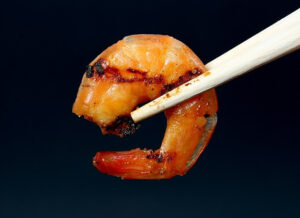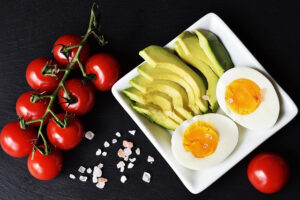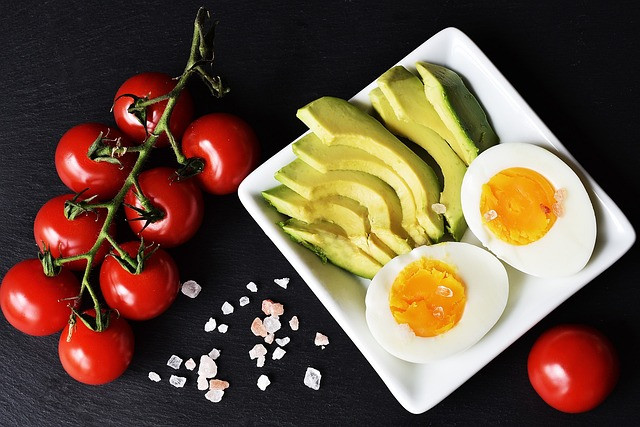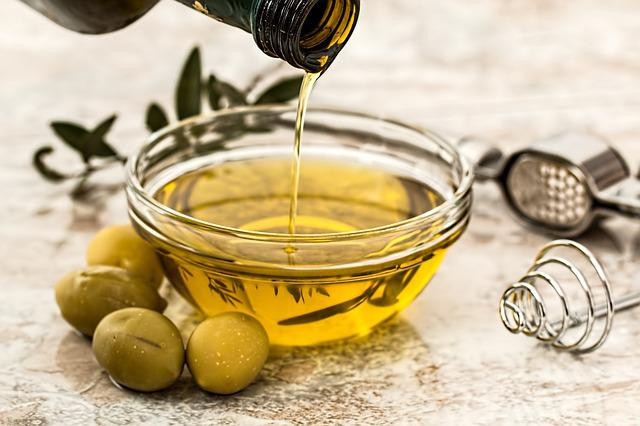One of the rarest things which can occur as a result of the keto diet is the keto rash. It develops in keto rash stages and can cause a lot of pain. This is an allergic reaction which develops as the body adjusts to the new normal. It’s not a food allergy, but it can be exacerbated by the lack of certain foods your body is accustomed to.
You can develop red rashes which itch and develop into pus filled cysts if the condition gets bad enough. Here is what you need to know about it and how you can deal with it.
What is the Keto Rash?
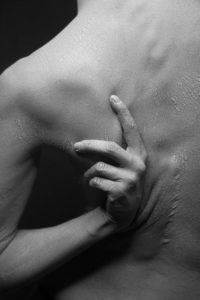
The Keto Rash, scientifically termed as the prurigo pigmentosa is an inflammatory skin condition. It’s rare, but can occur in people who have quickly switched to the keto diet without any adjustment period. It’s characterized by a red itchy rash around your trunk and neck.
The signs of this disease are quite similar to the symptoms of dermatitis. Skin rashes, skin trauma, and other skin disorders are quite similar in comparison to prurigo pigmentosa. However, the difference is the severity and pain that its patients go through.
The symptoms include:
- A red, itchy rash which appears on the chest, abdomen or the upper back. The rash can appear in other places as well.
- Papules appear on the skin. These are red spots which are shaped like webs.
- A dark brown pattern which is left on the skin appears after the papules diseappear.
What Causes the Keto Rash?
The link between the keto diet and the rash has not been researched thoroughly and requires further investigation. The current literature on the subject is scarce and incomplete. It’s not yet clear how other external factors contribute to the disease. Scientists are of the opinion that the causes of the rash are yet inconclusive and can only comment on the several associated conditions that come with it.
- Still’s Disease: More commonly known as AOSD, the symptoms including joint pain, salmon colored rashes, and high fevers.
- H. pylori Infection: This is a bacterial infection stemming from growth in the digestive tract. The infection attacks the stomach lining and is extremely common. Nearly 44% of people worldwide can suffer from this type of infection.
- Sjogren’s Syndrome: This is a chronic systemic disorder and is characterized as an autoimmune disorder. It affects nearly 1-4 million people in the US. It is sometimes accompanied by another autoimmune disease.
There is also a correlation between the keto rash and ketosis. This is how the nickname, keto rash is coined.
What are the Keto Rash Stages?
There are 4 main stages of the keto rash.
- The first stage sees the appearance of light pink skin lesions. These are known as urticarial papuloplaques. These lesions are scratch marks or temporary rashes. This is the initial stage of the rash and taking action here can help prevent a larger breakout.
- The late stage lesions develop more fully during the second stage and become more inflamed. These lesions are more aggressive and itchy and can cause the patient a lot of pain.
The lesions can also develop into fluid-filled cysts overtime. THese are known as papulovesicles. In very severe cases, the papules become papulopustules. These are lesions filled with pus and can cause the most pain. - The lesions resolve overtime in the third stage. They can turn crusty, scaly, and leave behind a brown color.
- The fourth and final stage creates web-like marks. These consist of both dark spots, and longer marks which are bigger than freckles. This is known as reticulated hyperpigmentation. It tends to remain long after the rash has healed. Hence, it stays on your skin and discolors it and leaves an ugly mark.
There is no clear or standard indicator of how long someone will suffer from the keto rashes. The stages can also last different periods of time depending on the person.
How to Prevent Keto Rash Stages?
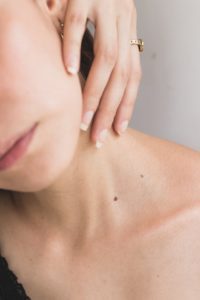
As they always say, prevention is better than the cure. Hence, if you want to prevent the keto rash from overwhelming your body, you can do so with a few adjustments.
The Cyclical Ketogenic Diet Will Help You Adjust
The human body is a system that adjusts gradually to the changes that it encounters. It can’t reset itself like a computer. Hence, you need to introduce the keto diet to your body gradually. Since, it’s a traditionally low-carb diet, you need to bring that to your body in stages.
For this, the cyclical ketogenic diet is the best approach. This simply allows you to adjust your carb intake gradually. You can still do carb consumption once or twice per week, which will help your body adjust to a higher protein and higher fat diet.
Know that these 1-2 “cheat days” where you increase your carbohydrate intake aren’t an excuse to go overboard. Instead, you should temper your carbohydrate consumption so that your body adjusts to fewer total carbohydrates.
You can use this strategy to reduce or eliminate the sudden allergic reactions from keto diets.
Practice Good Skin Care
Good skin care is just as important when considering your health, both mental and physical, especially if you have sensitive skin. If you want to prevent rash from the keto diet, your skin health will be your best friend. Your skin will be more resistant to changes in your diet, if you take care of it regularly.
Some tips you can use include:
- Washing your skin with room temperature water. Using room temperature water will help to temper any reactions.
- Using all-natural soaps and no anti-bacterial soaps. The latter are only necessary for doctors or if you’re trying to disinfect your hands. Anti-bacterial soap scrubs your skin clear of all the natural covers it has to protect against the environment as well. That’s not healthy.
- Keep your skin moisturized at all times. This will provide a natural cover against the pollutants in the air as well as prevent excessive evaporation. This will keep your skin hydrated, which is very effective against eczema and dry skin.
How to Treat Keto Rash Stages?

If you’ve been unable to prevent the keto rash, you can still try some home remedies to address the symptoms. These are effective treatments which have worked for other skin conditions.
Increase Your Carbohydrate Intake
You can increase your carb intake as a treatment for the keto rash. Simply reducing the withdrawal symptoms of the keto diet by reintroducing carbs is the natural response. However, overdoing this can cause you to lose all the progress you’ve made.
You can instead try eating any of the low-carb diet foods that will keep you in ketosis. These include strawberries, blueberries, etc. You can read about all the other carbohydrates that you can take in a keto diet in this article on our website.
Try Some Non-Dietary Methods
You don’t need to just take medications or alter your diet to treat the keto rash. Sometimes, adjusting certain non-dietary things in your life can help. Here are 3 Non Dietary methods you can use to reduce keto rashes.
1. Wear Loose Fitting Clothes
Loose fitting or comfortable clothing may sound like a no-brainer, but most people choose to wear uncomfortable clothing simply to appear thin.
This increases friction against your skin and increases the severity of the keto rash. Also, tight fitting clothes trap sweat against the skin and will only make the rash worse. However, if you wear loose fitting clothing, your clothes will naturally rub against your skin much less.
2. Adjust Your Exercise
If you want to reduce the inflammation on the outside of your skin, you can try changing your exercise routine. At times, reducing the total amount of exercise your do, or changing the type of exercise can work. You can even try quitting for a while. Eliminating any activity that produces excessive sweat while you’re adjusting to the keto diet can be very helpful.
3. Routine Shower After Exercise
If you won’t give up exercise, you can try taking cool showers right after you exercise. This will temper the inflammation against your skin. It will also get rid of the sweat that may get trapped in your pores. This will prevent the rash from spreading at the very least.
Compensate For Your Nutritional Deficiencies
Usually if you are deficient in certain nutrients, you can get some inflammatory skin conditions. For instance, vitamin A or B-12 nutrient deficiencies has been found in persons with chronic skin conditions. A lack of vitamin C has also been found in people with a skin conditions.
Eating restrictive diets can result in these issues. Hence, eating leafy greens or certain fruits like blueberries or strawberries can help you here.You can also try taking dietary supplements to improve this condition.
Try Anti-Inflammatory Supplements
Anti-inflammatory supplements like vitamin D supplements, fish oil supplements, etc. have been linked to dermatitis treatments. Probiotics and prebiotics as well as herbal supplements like evening primrose oil have yielded good results for dermatitis patients. These can work for keto rash stages as well.
You can also try incorporating more anti-inflammatory foods into your diet.
Remove Food Allergens From Your Diet
The keto diet lays emphasis on increasing fat intake and protein intake instead of carbs. Hence, some common foods to eat here include eggs, dairy, fish, nuts, seeds, etc. Many of these foods happen to be common food allergens as well.
These can be sources of inflammation. It’s very important to eliminate these allergens from your diet if you’re to eliminate the keto rash. You can still stick to the high-fat diet even without these foods.
Consult Your Doctor
If all else fails, you should talk to your doctor about any medication you can take. Don’t discount medication as the cure to your woes here. Effective medications usually prescribed for prurigo pigmentosa including antibiotics like doxycycline or Dapsone.


